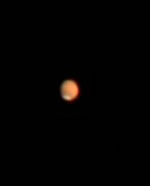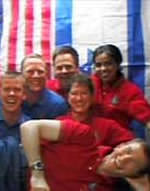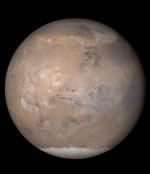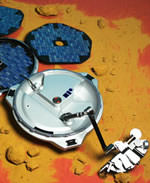
Image credit: NASA
James M. Kennedy was selected by NASA today as administrator of the agency’s Kennedy Space Center (KSC) in Florida. Prior to this assignment, Kennedy was the deputy director of NASA’s George C. Marshall Space Flight Center in Huntsville Alabama, and served as a project manager for the X-34 and DC-XA projects. He first joined NASA in 1968 and has received numerous awards during his tenure with the space agency.
William F. Readdy, Associate Administrator for Space Flight at NASA Headquarters in Washington, today named James W. Kennedy as the new Director of the agency’s Kennedy Space Center (KSC) in Florida. Kennedy has served as KSC’s Deputy Director since November 2002. He will succeed General Roy Bridges, who was appointed to lead NASA’s Langley Research Center, Hampton, Va., June 13.
“Along with his impeccable credentials, Jim brings stability to KSC at a time when we need it,” Readdy said making the announcement. “As we prepare to implement the findings of the Columbia Accident Investigation Board, Jim’s knowledge of the Space Shuttle and his leadership abilities are essential in making our ‘Return to Flight’ effort a success,” he said.
Prior to his assignment to KSC in 2002, Kennedy was deputy director of NASA’s George C. Marshall Space Flight Center in Huntsville, Ala.
Kennedy also served as project manager for major initiatives, such as the X-34 and the DC-XA, and he led the One NASA effort to help make the agency more effective and efficient by encouraging teamwork across all field centers. In early 1996, he was the manager for Marshall’s Space Shuttle Projects Resident Office at KSC. Kennedy returned to Marshall when he received a Senior Executive Service appointment in September 1996 and was named manager of the Solid Rocket Booster Project.
In 1998, he was selected as the Deputy Director of Science and Engineering, where he was responsible for establishing and maintaining a nationally recognized research and development capability in space research and technology. One year later, he became the Director of Engineering.
“Jim is the right person we need at the helm of the Kennedy Space Center, as we prepare to return to safe flight,” added NASA Administrator Sean O’Keefe. “He’s a distinguished engineer and a devoted public servant. I know his colleagues at KSC will give Jim their full support, and I am confident, under his guidance, the center will meet and exceed all the objectives facing us in the coming months,” O’Keefe said.
Kennedy first joined NASA in 1968 in the Aerospace Engineering Cooperative Education program at KSC. He earned a bachelor’s degree in mechanical engineering from Auburn University, Ala., in 1972. After being called to active duty in the U.S. Air Force, he earned his master’s degree in business administration from Georgia Southern University, Statesboro, in 1977.
Kennedy has received numerous awards during his NASA career, including Marshall’s Leadership Award, NASA’s Silver Snoopy Award, a Distinguished Service Medal and a Meritorious Rank Award. He also has received a Group Achievement Award and several Special Service and Performance Awards. In 2003, Kennedy received the National Space Club’s Astronautics Engineer of the Year Award.
Original Source: NASA News Release




